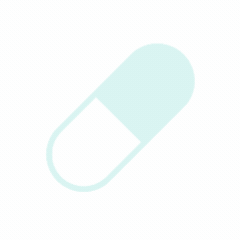Drug updated on 12/11/2024
| Dosage Form | Capsule (oral; 50 mg) |
| Drug Class | Kinase inhibitors |
| Ongoing and Completed Studies | ClinicalTrials.gov |
Indication
- Indicated for the treatment of severe alopecia areata in adults and adolescents 12 years and older.
Latest News

Summary
- This summary is based on the review of five systematic review(s)/meta-analysis(es). [1-5]
- Effectiveness of Ritlecitinib: Ritlecitinib 50 mg showed high efficacy in reducing the Severity of Alopecia Tool (SALT) score, achieving a strong relative effect (sucra = 0.8689 for SALT(50) response), indicating it is among the most effective Janus Kinase (JAK) inhibitors for alopecia areata (AA).
- Comparative Efficacy: Among JAK inhibitors, Ritlecitinib 200/50 mg demonstrated a dose-dependent effect and was highly effective, similar to brepocitinib 30 mg and baricitinib 4 mg, with these drugs showing the highest probabilities of being the most effective therapies for AA.
- Effectiveness in Severe Alopecia: Deuruxolitinib 12 mg was noted to be particularly effective for patients with severe AA, achieving a high success rate for the SALT(75) response (Surface Under the Cumulative RAnking curve (SUCRA) = 0.9761), although it may be associated with a higher likelihood of adverse events compared to other JAK inhibitors.
- Common Adverse Events (AES): Ritlecitinib was associated with acne (10.4%) and headache (12.5%), while deuruxolitinib reported higher rates of headache (21.4%) and acne (13.6%). Upper respiratory infections were comparable to placebo in baricitinib but increased with brepocitinib.
- Serious Adverse Events (SAES): Isolated grade 3-4 AEs were reported, including myocardial infarction, hypertensive urgencies, cellulitis, rhabdomyolysis, neutropenia, and significant elevation of creatinine kinase.
- The population types included patients with severe AA, where deuruxolitinib 12mg showed the highest efficacy. Oral JAK inhibitors demonstrated greater effectiveness compared to topical formulations across multiple studies, and patients discontinuing JAK inhibitors experienced high recurrence rates, suggesting the need for ongoing treatment to maintain results.
Product Monograph / Prescribing Information
| Document Title | Year | Source |
|---|---|---|
| Litfulo (ritlecitinib) Prescribing Information. | 2023 | Pfizer Inc., New York, NY |
Systematic Reviews / Meta-Analyses
| Document Title | Year | Source |
|---|---|---|
| Comparative efficacy and safety of JAK inhibitors in the treatment of moderate-to-severe alopecia areata: a systematic review and network meta-analysis | 2024 | Frontiers in Pharmacology |
| Comparative efficacy of oral Janus kinase inhibitors and biologics in adult alopecia areata: A systematic review and Bayesian network meta-analysis | 2024 | Journal of the European Academy of Dermatology and Venereology |
| Safety of Janus Kinase inhibitors in Patients with Alopecia Areata: A Systematic Review | 2023 | Clinical Drug Investigation |
| Adverse events in patients treated with Jak-inhibitors for alopecia areata: A systematic review | 2023 | Journal of the European Academy of Dermatology and Venereology |
| The efficacy and safety of JAK inhibitors for alopecia areata: A systematic review and meta-analysis of prospective studies | 2022 | Frontiers in Pharmacology |

